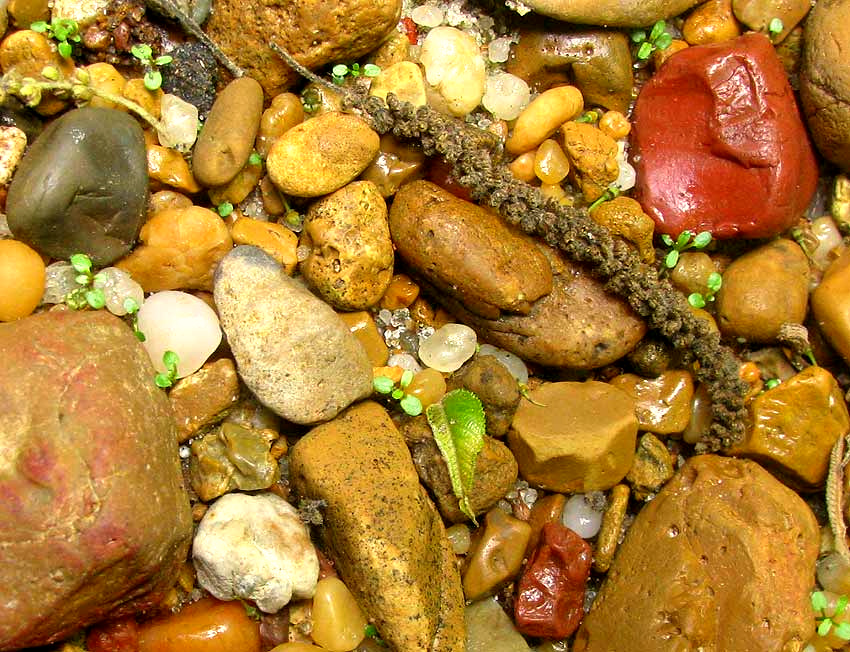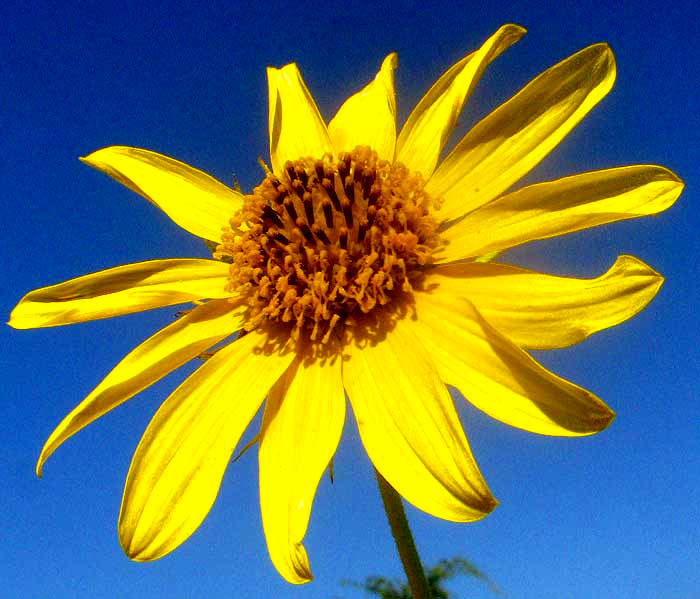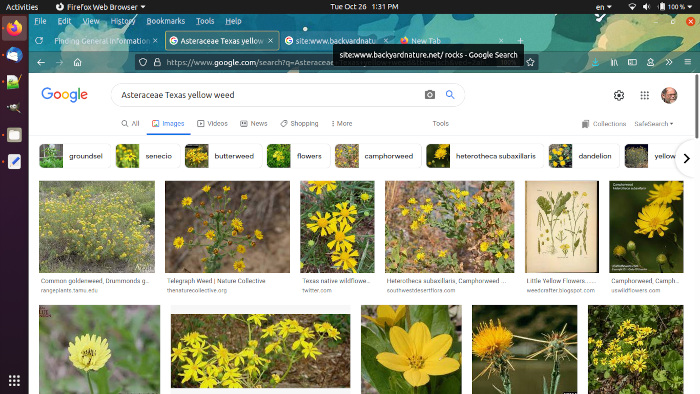FINDING GENERAL INFORMATION ON THE INTERNET
Let's say you've identified a Black Widow Spider and you want more information on that species. On the Internet, you should "do a search" using the keywords "Black Widow Spider," or "Latrodectus mactans," its technical name. To see what happens, type the keywords into the window below:
That's basic procedure for using search engines. However, there are tricks to getting the most out of them.
SMART KEYWORDS

The main trick is to smartly use them, which consists of searching with the right keywords. For example, if you see naturally occurring gravel in the bottom of a nearby stream and want to understand why the gravel is there and why it consists of pebbles of such different colors, you know you can get a general statement by searching on the keyword "gravel," but, really, you're more interested in knowing why your gravel is in a stream bed, why the pebbles are so colorful, and where the gravel came from.
A smarter set of keywords would take into account the fact that understanding gravel is a part of the study known as geology. Also, remember that different parts of the world have different geological conditions, so you need to search for notes on the geology of your home area -- localize your search. However, if you live in Chicago and search on the keywords "gravel Chicago," you'll be referred to web pages on which companies offer to sell gravel in Chicago. A smarter set of keywords might be "geology Chicago gravel composition streams."
You might try plugging those keywords into the above search box and see what you get. Then play with other keywords more in tune with your own special interests.
IMAGE SEARCHES

Identifying yhr natural things we find lies at the heart of our Nature-study process. One of the most powerful tools we backyard naturalists have for that is the image search feature of several major search engines.
You see a wildflower such as the one shown at the right, so you search for identified images looking like your wildflower. You search with your keywords, and if you see a matching picture you click on it, go to the picture's home website, and if the picture is correctly identified, you've hit the jackpot, because now you can look up the name to find out what's known about it.

With image searches it's particularly important to choose your keywords smartly. For instance, with our yellow flower we'd need keywords saying that we're looking for a member of the Aster or Composite family, the Asteracea, that it's yellow, and that it was growing weedily in southwestern Texas. A good first effort with the keywords would be "Asteraceae Texas yellow weed." That'll turn up surprisingly many species. If you fine tune your search by saying it's a kind of sunflower, you'll have better luck.
Popular search engines offering the image search feature are listed and linked-to below:
NATURALIST-WRITTEN BOOKS
For centuries naturalists have been writing wonderful books, such as those profiled on the Nature Books page of GoodReads.com. Most of those are hardback and paperback books to be bought online. However, numerous websites offer books that can be read online, or downloaded into a reader, either for a fee, or for free. To find such offerings, do a search on such keywords as "download books for readers."
Many of the great classics of nature writing can be downloaded for free at the Project Gutenberg website. Its titles were published so long ago that their copyright has passed into the Public Domain. This is a wonderful site and if you'd like to go there right now just click on the following banner:

Here's an example of Nature classics available at Project Gutenberg:
- Charles Darwin's On the Origin of Species and The Voyage of the Beagle
- Henry David Thoreau's Walden
- John Muir's Steep Trails
- Jack London's The Call of the Wild and many other books and short stories mostly about the Far North
- Alexander von Humboldt's Personal Narrative of Travels to the Equinoctial Regions of America, During the Year 1799-1804 -- Volume 1
